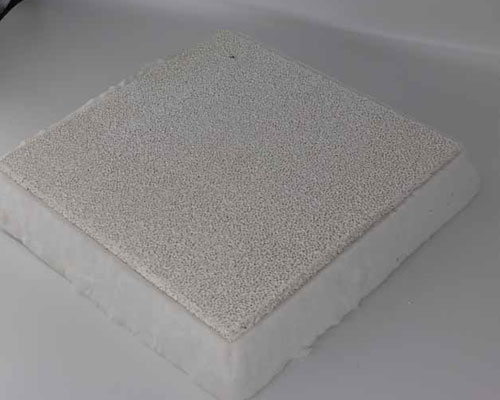The porous ceramic foam filters can remove molten aluminum impurities, and combine the physical and chemical principles to filter molten aluminum and aluminum alloys to improve the quality of aluminum products.
The large impurities of porous ceramic foam filters include physical barriers, interceptors, and tiny impurities, which have chemical affinity and are attracted to the surface, sidewalls, or holes of the filter.
Therefore, impurities can be effectively filtered from cast products of various sizes, including impurities much smaller than the pores for filtering impurities. The filter can comb the entire disordered molten metal flow, reduce turbulence, and make the molten metal flow smooth and clean.
The filtration efficiency of ceramic foam filters in aluminum plants is closely related to their correct installation and use. At the same time, due to the filtering process, conventional and necessary measures are taken to reduce the occurrence of inclusions in smelting, furnace treatment, and casting operations. It is also necessary to prevent recontamination of the filtered clean aluminum liquid.

How to Install the Porous Ceramic Foam Filters
1. Correctly choose porous ceramic filter:
The selection of filter plate size and hole number specifications must consider factors, such as the flow range of the specific casting type, the maximum level of metal during the filtration process, the total filtration volume, and the cleanliness of the original aluminum liquid.
2. The pretreatment of melt filtration cannot be ignored:
For example, conventional slag cleaning and furnace refining in aluminum melting furnaces and holding furnaces. In particular, the online degassing device is still necessary, because it can not only reduce the hydrogen content in the melt but also remove some non-metallic inclusions.
3. The filter plate must fit the square refractory filter box:
The adaptation of the two makes it easy to seal, which not only prevents metal from flowing into the casting box from the gap without being filtered but also prevents the foam filter plate from being too light and floating in the aluminum water to cause failure.
4. Need to warm up before use:
Preheat to remove moisture and facilitate preliminary filtration. Electric heating or gas heating can be used for preheating. Normally, it takes about 15 minutes.
5. In the normal filtering process, there is no need to discharge the slag to avoid the knocking and vibration of the filter plate. At the same time, the launder should be filled with molten aluminum to avoid excessive interference with molten aluminum.
6. After casting, put the metal into the launder and filter plate. A vibrator was placed on the filter plate and vibrated for one minute. It can shake off about 75% of the remaining liquid metal from the filter plate.
7. Finally clean up for four weeks, and remove the filter plate after curing.

